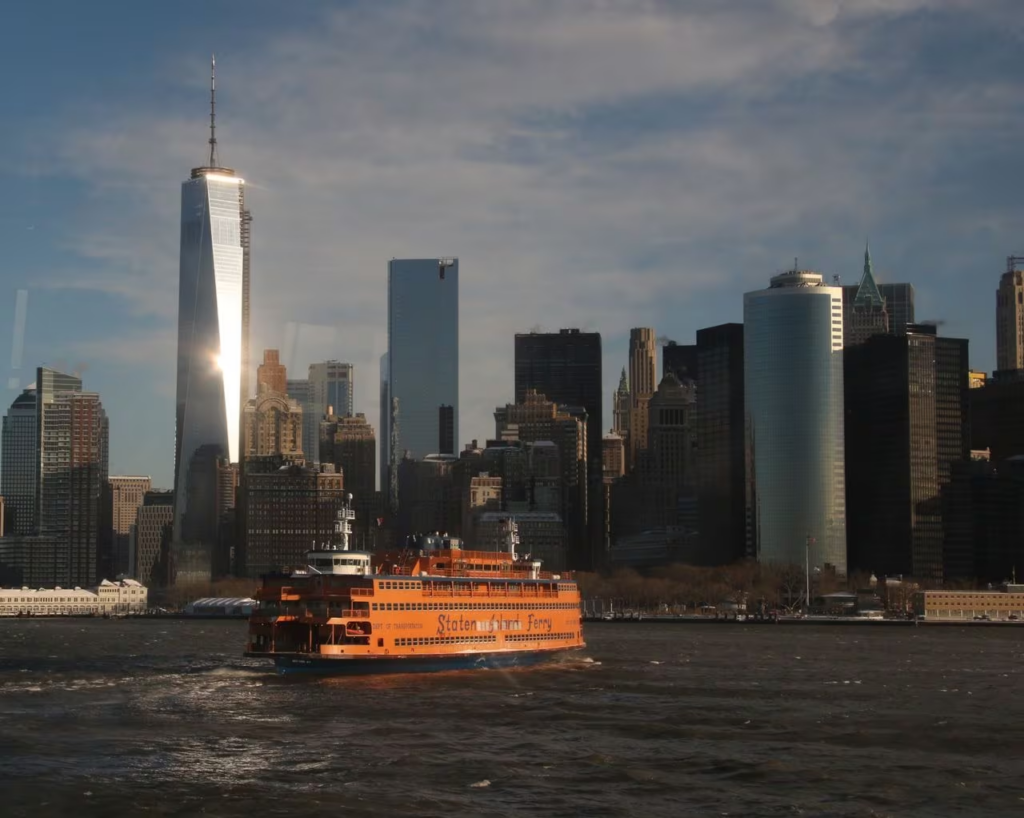Published: Mar. 13, 2023, 6:30 a.m.
By Joseph Ostapiuk | jostapiuk@siadvance.com

The Staten Island Ferry makes it morning run to lower Manhattan on Wednesday, Jan. 22, 2014. (Staten Island Advance/ Steve Zaffarano)
STATEN ISLAND, N.Y. — A plan to fundamentally change New York City’s zoning regulations to help reach its ambitious climate goals received an endorsement from a leading environmental organization this week in a boost to the proposal’s prospects.
Mayor Eric Adams’ City of Yes for Carbon Neutrality initiative, first called Zoning for Zero Carbon, stands as a critical component to the city’s ability to slash its carbon emissions 80% by 2050 — an intention aimed at supporting global climate efforts to limit global warming to no more than two degrees Celsius.
The plan, a multi-pronged amendment to the city’s zoning regulations, would remove obstacles for clean energy storage, allow for more rooftop solar panels and eliminate barriers standing in the way of electrically-retrofitting buildings.
The New York League of Conservation Voters’ (NYLCV) 2023 policy agenda expressed support for the amendment, pitched by the city’s Department of City Planning (DCP), in a rare comment on land use and zoning action.
“It’s been several years since the city reviewed the zoning resolution to see how it can help building owners and others work toward the city and state’s goals,” said Alia Soomro, NYLCV’s deputy director for New York City Policy. “The zoning resolution is in many ways inconsistent sometimes with the building code, so this zoning proposal will hopefully bring it up to speed.”
Buildings, by far, serve as the primary source of greenhouse gas emissions in New York City.
The City Council in 2019 passed Local Law 97, which mandated the city undergo a 40% reduction in building emissions by 2030 by capping emissions for existing large buildings beginning in 2024. Penalties for non-compliance can come in the form of hefty fines.
However, as that law nears enactment, officials said changes were required to allow building owners to meet the lofty expectations.
“Half the problem was that even if some buildings wanted to comply and lower their footprint, they can’t under existing zoning code,” said City Council Minority Leader Joe Borelli (R-South Shore), who previously worked to revise the city’s fire code to allow for solar panel installation on small buildings, a precursor to the latest plan.
The DCP’s plan would serve as a significant piece in changing that dynamic by removing unintended impediments that could hinder installation of green technology or retrofitting efforts essential to cutting overall emissions.
The proposed text would remove restrictions currently required to assess vital energy storage projects on a case-by-case basis, complicating the timing of the city’s emission reductions.
And, the plan would green-light more electrical vehicle charging stations on city streets and expand the infrastructure required for shifts away from gas-powered vehicles.
The NYLCV support for the proposal comes at an integral time in the steps toward its potential approval.
The DCP’s first informational sessions for the zoning text amendment will be held on March 20 and March 28 ahead of the formal public review process, which will begin this spring. Then, the proposal will go through all 59 community boards, all five borough boards and across the desks of all five borough presidents.
It will then go before the City Planning Commission for a public hearing and vote. Last, it would undergo the same process in the City Council — a step Borelli said will likely be concluded this year.
Dan Garodnick, DCP director and chair of the City Planning Commission, said the agency was “honored” to have the support of the NYLCV as the city works toward reaching its climate goals.
“This proposed zoning change will make it easier to green our grid, reduce our carbon emissions, and lower Yorkers’ energy costs,” said Garodnick. “We’ll continue to partner with environmental advocates to say yes to a greener, more resilient future as the City of Yes for Carbon Neutrality initiative progresses.”
The implications of reaching local and global climate goals are significant.
International researchers have found the warmest 10 years in recorded history have occurred since 2010. One analysis by the Copernicus Climate Change Service, a European Union program, found global temperatures have risen approximately 1.2 degrees Celsius above mid-19th-century levels — increasingly close to the 1.5 degree mark experts say could have cascading impacts to life on Earth.
The 2016 Paris Climate Agreement encouraged countries to take ambitious actions to avoid reaching that threshold while ensuring temperatures did not surpass 2 degrees Celsius, which would limit progressively worse impacts like frequent heat and extreme weather.
Forecasts predict sea-level rise in the United States over the next 30 years will equal the rise seen over the past 100, for example, raising concerns for areas like Staten Island that have already experienced a spike of high-flood days in recent years.
Staten Island 2100, a series the Advance/SILive.com published last year, showed how the borough’s coastline could be transformed under varying climate scenarios.
Scientists note that even if warming is not limited to promises outlined in international agreements, mitigating every additional tenth of a degree will make a difference.
